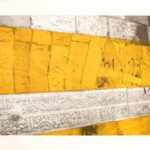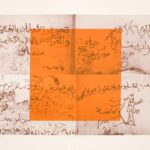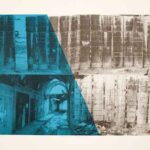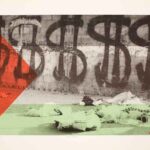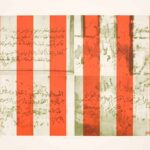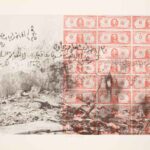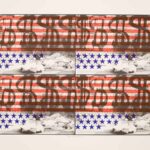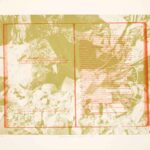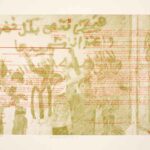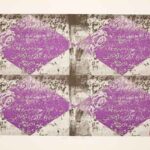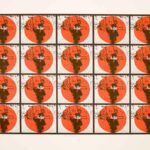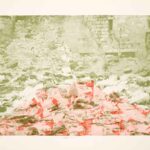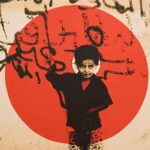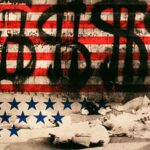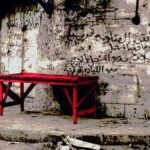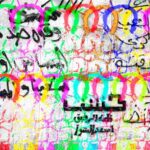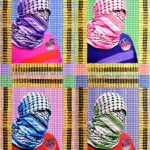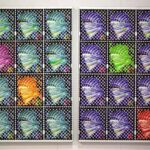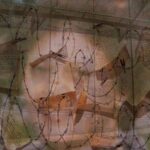Laureate of The Palestine Prize for Art 2022
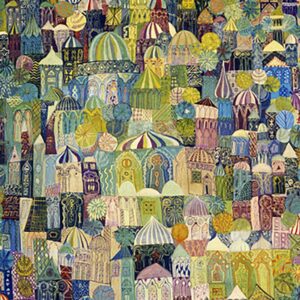
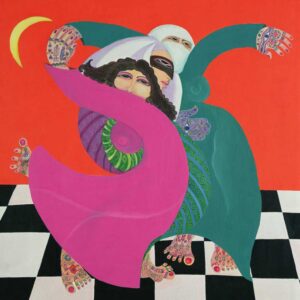
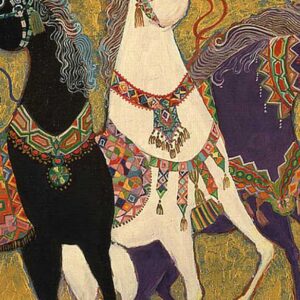
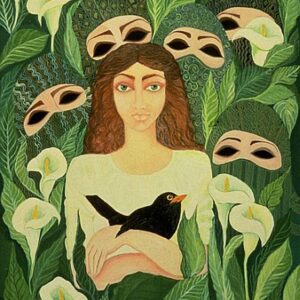
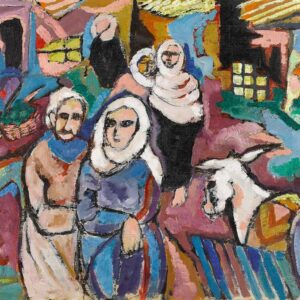
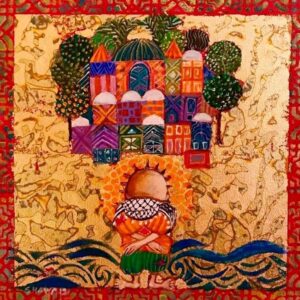
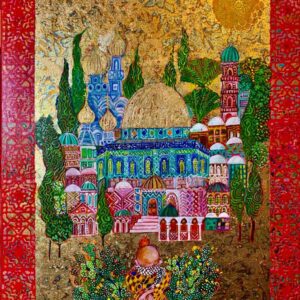
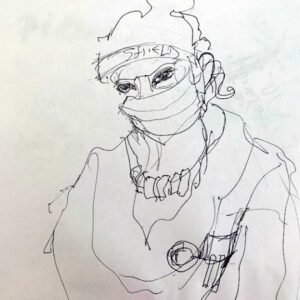
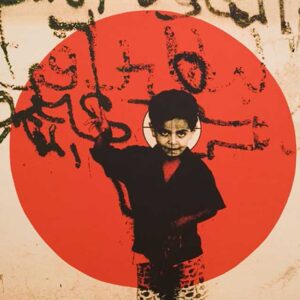
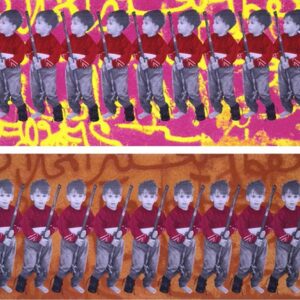
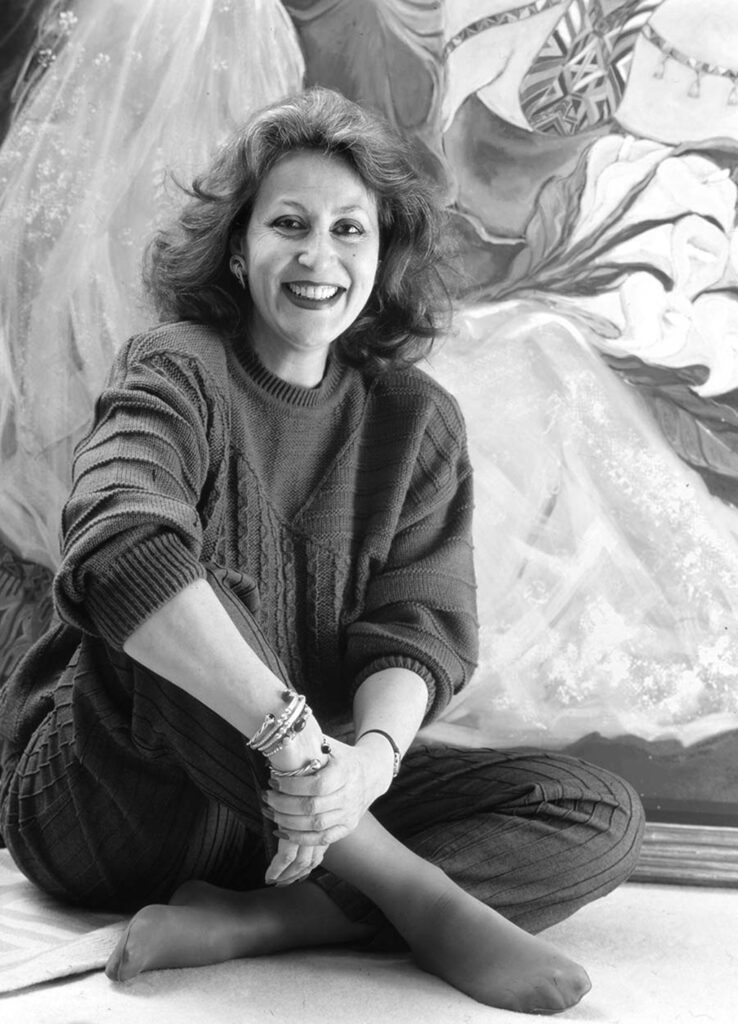
Laila Shawa
Date of Birth: April 4, 1940
Place of Birth: Gaza, British Palestine
Life cannot be defined in binary terms, it’s nuanced, messy and contradictory – as are we ourselves.”—Laila Shawa
Laila Shawa (b. 1940, Gaza), was born into one of Palestine’s old established families during the days of the British Mandate. She currently lives and works in London. Shawa began formal art training at the Leonardo da Vinci Art Institute in Cairo, Egypt, in 1957, before transferring to the Academy of Fine Arts in Rome, Italy. Working under Renato Gattuso she received a BA (Hons) in Fine Arts and a further Diploma in Plastic and Decorative Arts from the Academia St Giacomo. Between 1960 and 1963, she spent time broadening her practice at Oskar Kokoschka’s pioneering School of Seeing, in Salzburg, Austria. Shawa returned to Gaza, in 1964, to work in refugee camps, supervising arts and crafts education for the UNRWA and instructing art teachers under a UNESCO programme. Around this time, she began working informally at the studio of the UN war photographer, Hrant Nakasian. In 1967, Shawa moved to Beirut to work as a full-time artist, before returning to Gaza, on the outbreak of the Lebanese Civil War, in 1975.
Laila’s father, Rashad al-Shawa, as the Mayor of Gaza during this difficult period, commissioned a new Cultural Center in Rimal, Gaza, with the intention of developing links between the beleaguered Palestinian population and the wider international community. Working closely with the UK-based architect Saad Mohaffel, Shawa managed the logistics of implementing this massive undertaking, for which she also designed the stained-glass windows. Estimated to take five years to accomplish, this complex construction project took over a decade to complete because of restrictions imposed on movements of essential building materials. The Rashad Shawa Cultural Center was finally completed in 1988. From 1987 onwards, the intensifying protests and violent unrest of the First Intifada, convinced Shawa to settle in London, where she has based her activities ever since. Although exclusively occupied in overcoming the administrative problems of the Cultural Center project, photographs she took at the time would later become the core of her artistic output and help define her developing path. Recording the polemical discourses scrawled daily across the walls of her native city and documenting the unrest of those volatile years, The Walls of Gaza series came to form the bedrock on which her reputation as an international artist still rests today.
Shawa’s mining of these historical documentary photographs in her paintings, sculptures, and installations has been hugely influential on contemporary Palestinian art. Exhibitions such as Crucifixion 2000: In the Name of God, at the Ashmolean Museum, Oxford in 2000, and installations such as the sculpture Clash, which conveyed her immediate and passionate reactions to the events of 9/11, have proven both stimulating and provocative. In her 2008 series Sarab, Shawa returned to painting, executing a cycle of twenty-nine works that assert the role of Islamic geometric patterning as a primary visual identifier of Islamic popular culture. In January 2009, she embarked on two new series, The Walls of Gaza III and a cycle of works entitled Cast Lead. The latter focuses on the many children killed during ‘Operation Cast Lead’ —the Israeli name for its three-week-long airstrike operations deep into Gaza, that indiscriminately targeted the civilian population. Shawa’s uncompromising response was a daring series called Cast Lead, (2011–12), which explored such controversial subjects as the atrocity of aerial strikes on civilian centres and female Palestinian suicide bombers. Many of these works were exhibited in The Other Side of Paradise, at October Gallery in 2012.
Artist’s Statement
“Growing up in the Middle East, where many diverse cultures live in close proximity to each other, I quickly became fluent in several different languages. Speaking other languages helps one understand how complex problems give rise to multiple explanations that can often be mutually exclusive. Using the artist’s privileged vantage point, I try to consider all sides of any question. My multi-layered approach is designed to highlight and explore the dichotomies, ironies, and hypocrisies to which many seem less well attuned.”
Publications
Venetia Porter, Charles Tripp and Natasha Morris, Reflections: contemporary art of the Middle East and North Africa, British Museum Press, London, 2021.
Lynn Gaspard, Don’t Panic, I’m Islamic: Words and Pictures on How to Stop Worrying and Love the Alien Next Door, Saqi Books, London, 2017.
Patrizia Pulga, Le donne fotografe dalla nascita della fotographia ad oggi. Uno sguardo di genere, Pendragon, Bologna, 2017.
Nada Shabout, Modern Arab Art, Formation of Arab Aesthetics, University Press, Florida, 2015.
Charles Tripp, The Power and the People: Paths of Resistance in the Middle East, Cambridge University Press, 2013.
Bashir Makhoul and Gordon Hon, The Origins of Palestinian Art (Value : Art : Politics), Liverpool University Press, Liverpool, 2013.
Saeb Eigner, Art of the Middle East: Modern and Contemporary Art of the Arab World and Iran, Foreword by Zaha Hadid, Merrell Publishers Limited, London, 2010.
Nat Muller, Contemporary Art in the Middle East, Black Dog Publishing, London, 2009.
Hossein Amirsadeghi (ed.), New Vision: Arab Contemporary Art in the 21st Century, Thames and Hudson, London, 2009.
Gannit Ankori, Palestinian Art, Reaktion Books, London, 2005.
Phillip Mattar, Thomson Gale, The Encyclopedia of the modern Middle East & North Africa, Macmillan Reference USA, Detroit, MI, 2004.
Valentijn Bijvanck, Conventions in contemporary art: lectures and debates, Witte de With 2001, Center for Contemporary Art, Rotterdam, 2002.
Naomi S. Nye (ed.), The Space Between Our Footsteps, Painting and Poetry, Simon and Schuster, New York, 1998.
Wijdan Ali, Modern Islamic Art: Development and Continuity, University Press Florida, Gainesville, 1997.
The Dictionary of Art, Macmillan Press, London, 1996.
Ismail Shammout, Art in Palestine, Al Qabbas Press, Kuwait, 1989.
Wijdan Ali, Contemporary Art from the Islamic World, Scorpion Books, London, 1988.
Helen Khal, The Woman Artist in Lebanon, Institute for Women Studies in the Arab World, Beirut, 1987.
Afif Bahnasi, Pioneers of Modern Art in Arab Countries, Dar Al-Raed Al Arabi, Beirut, 1985.
Exhibition catalogues
Intimate Terrains: Representations of a Disappearing Landscape, The Palestinian Museum, Birzeit, 2019.
Between Desert and Sea, Pera Museum, Pera Museum Publications, Istanbul, 2013.
Judith K. Brodsky and Ferris Olin, Women of the Fertile Crescent: Gender Art and Society,
The Rutgers University Institute of Women and Art, New Jersey, 2012.
AKA Peace, Peace One Day and Phillips de Pury & Company, 2012.
Laila Shawa: The Other Side of Paradise, October Gallery, London, 2012.
Nada Shabout and Wassan Al-Khudhairi, Sajjil: A Century of Modern Art, Mathaf, The Arab Museum of Modern Art, Doha, 2010.
Creative Palestinian Art, Competition I Publication I Exhibition, The Art Sawa Awards, Art Sawa, Dubai, 2010.
Arabopop, Articulate Baboon Gallery, Cairo, 2010.
Venetia Porter (ed.), Isabelle Caussé and Aimée Froom, Word into Art: Artists of the Modern Middle East Dubai 2008, Foreword by Saeb Eigner, Dubai Holding LLC, Dubai, 2008.
Christa Paula (text), Sarab, DIFC, Dubai, 2008.
Gabriele Magnani and Pittelli Rossana, Mediterraneo: A Sea that Unites, The Italian Cultural Institute, London, 2008.
Venetia Porter (ed.) and Isabelle Caussé, Word into Art: Artists of the Modern Middle East, Foreword by Saed Eigner, The British Museum Press, London, 2006.
Wijdan Ali, Jordan National Gallery of Fine Arts Collection Catalogue, Amman, 2005.
Religion, Art and War, UNICEF/ Maison des arts, 2003.
From the Ocean to the Gulf and Beyond: Modern Arab Art, The Royal Society of Fine Arts, Amman, 2002.
Wijdan Ali (text), Between Legend and Reality: Modern Art from the Islamic World, Reykjavik Art Museum, Reykjavik, 2002.
Twelve Arab Artists, Exhibition Catalogue, Wereld Museum, Rotterdam, 2001.
Fran Lloyd (ed.), Contemporary Arab Women’s Art: Dialogues of the Present, Women’s Art Library, London, 1999.
Mediterranea: Art Life, Brussels, 1998.
Tina Sherwell, Artistes Palestiniens Contemporains, Institut du Monde Arabe, Paris, 1997.
The Right to Write, Agnes Scott College, Atlanta, 1996.
The Right to Hope, Global Problems, Global Visions, Earthscan Publications Ltd, London, 1996.
Shawa and Wijdan, October Gallery, Amica Press, 1994.
Salwa Mikdadi Nashashibi, Etel Adnan, and Laura Nader, Forces of Change: Artists in the Arab World, International Council for Women in the Arts, National Museum for Women in the Arts, Washington, 1994.
Malaysian experience, Malaysian Images, The National Art Gallery, Kuala Lumpur, Malaysia, 1990.
| 1957 – 58 | School of Art Leonardo Da Vinci, Cairo, Egypt | |
| 1958 – 60 | Accademia di Belle Arti di Roma, University of Rome, Italy, BA Hons Fine Arts | |
| 1960 – 63 | Summer Courses under Austrian Expressionist Oskar Kokoschka, International Summer Academy of Fine Arts, School of Seeing, Salzburg, Austria | |
| 1960 – 64 | Scuola di Arti Ornamentali San Giacomo, Rome, Italy. Diploma in Plastic & Decorative Arts |
| Selected Solo Shows | ||
| 2019 | Laila Shawa – Open Studio, with Janet Rady Fine Art, London, UK | |
| 2012 | The Other Side of Paradise, October Gallery, London, UK | |
| 2011 | Trapped: A Female Suicide Bomber, Galerie Imane Farès, Paris, France | |
| 2010 – 11 | Sarab (Mirage), The Art Museum, Sharjah, UAE | |
| 2010 | Arabopop, Articulate Baboon Gallery, Cairo, Egypt | |
| 2008 | Sarab (Mirage), Atrium Gallery, DIFC, Dubai, UAE | |
| 2000 | In the Name of God: Crucifixion 2000, Ashmolean Museum, Oxford, UK | |
| 1994 | The Walls of Gaza Series II, The Library, SOAS, University of London, London, UK | |
| 1994 | The Walls of Gaza I, Jordan National Gallery of Fine Arts, Amman, Jordan | |
| 1992 | Women and Magic, The Gallery, London, UK | |
| 1990 | Women and the Veil, Jordan National Gallery of Fine Arts, Amman, Jordan | |
| 1975 | Of Horses and Cities, L’Antiquaire Gallery, Beirut, Lebanon | |
| 1972 | Cities, Sultan Gallery, Kuwait City, Kuwait | |
| 1971 | Cities of Gold, Dar Tunis, The Tunisian Cultural Centre, Beirut, Lebanon | |
| 1970 | Laila Shawa at the Vendome, Hotel Vendome, Beirut, Lebanon | |
| 1968 | Exhibition of drawings by Laila Shawa, The Book Centre Gallery, Beirut, Lebanon | |
| 1965 | Contrast and Difference, Marna House, Gaza, Palestine | |
| Selected Group Shows | ||
| 2022 | Amira Behbahani (Kuwait), Laila Shawa (Palestine) and Zena Assi (Lebanon), CAP (Contemporary Art Platform), Shuwaikh Industrial, Kuwait (Walls of Gaza II series as well as other works were shown) | |
| 2021 | Women in the Arts, INSIDE/OUT, CAP (Contemporary Art Platform), Shuwaikh Industrial, Kuwait and CAP Collection Online through Google Art & Culture (complete set of the Walls of Gaza II series) Summer Collection, Part 15, Al Markhiya Gallery, Fire Station, Doha, Qatar (complete set of Walls of Gaza II series) | |
| 2020 | Art of Palestinian Women, Museum of the Palestinian People, Washington, D.C., USA | |
| 2019 | Dream No Small Dream: Celebrating 40 Years of the Transvangarde, October Gallery, London, UK Intimate Terrains: Representations of a Disappearing Landscape, The Palestinian Museum, Birzeit, West Bank, Palestine (complete set of the Walls of Gaza II series) | |
| 2018 | Transvangarde, October Gallery, London, UK 12/120 Exhibition, Al Markhiya Gallery, Katara Art Center, Doha, Qatar, (complete set of the Walls of Gaza II series) | |
| 2017 | Transvangarde 2017, October Gallery, London, UK | |
| 2016 | Moments of Possibilities: Air, Land and Sea, Qalandiya International III London 2016 ‘This Sea is Mine’, Palestine Regeneration Team (PART), University of Westminster, London, UK The Short Century, Sharjah Art Museum, Sharjah, UAE | |
| 2015 | Art15, London, UK (with October Gallery, London, UK) Autonomous Gallery: The Conflict and Future of Middle East, P21 Gallery, London, UK Walls and Margins, Barjeel Art Foundation, Sharjah, UAE Bridge to Palestine, Mark Hachem Gallery, Beirut, Lebanon | |
| 2014 | 35 Years of Transvangarde: Contemporary Art from Around the Planet, October Gallery, London, UK Beirut Art Fair, Beirut, Lebanon (with Mark Hachem Gallery, Beirut, Lebanon) Bridge to Palestine, Mark Hachem Gallery, Beirut, Lebanon Sky Over The East, Barjeel Art Foundation, Sharjah, and Abu Dhabi Music & Arts Foundation, Abu Dhabi, UAE Art14, London, UK (with October Gallery, London, UK) | |
| 2013 | Art Dubai, Dubai, UAE (with October Gallery, London, UK) Muslima: Muslim Women’s Art & Voices, muslima.imow.org The World of Extraordinary Objects, October Gallery, London, UK Abu Dhabi Art, Abu Dhabi, UAE (with October Gallery, London, UK) Art13, London, UK (with October Gallery, London, UK) Resilience and Light, Studio 3 Gallery, University of Kent, Canterbury, UK Between Desert and Sea, a selection from the Jordan National Gallery of Fine Arts, Amman, Jordan, Pera Museum, Istanbul, Turkey | |
| 2012 | The Fertile Crescent: Gender, Art, and Society, The Princeton University Art Museum, New Jersey, USA Refractions, P21 Gallery, London, UK AKA Peace, Phillips de Pury, London, UK AKA Peace, Institute of Contemporary Arts, London, UK | |
| 2011 | Passport to Palestine, La Scatola Gallery with Janet Rady Fine Art, London, UK Abu Dhabi Art Fair, Abu Dhabi, UAE (with October Gallery, London, UK) Al Bab, A Gateway to Contemporary Arab Art, Sotheby’s, London, UK Art Dubai, Dubai, UAE (with October Gallery, London, UK) | |
| 2010 – 11 | Miragens: Contemporary Art in the Islamic World, Centro Cultural Banco do Brasil, Rio de Janeiro, touring to : Sao Paolo; Brasilia, Brazil | |
| 2010 | Sajjil, A Century of Modern Art, Mathaf: Arab Museum of Modern Art, Doha, Qatar Co-incidence, Galerie Imane Farès, Paris, France Crunchtime: Artist’s Responses to the Global Crisis, International Visual Arts Event, York, UK Creative Palestinian Art, Competition, Exhibition & Publication, The Art Sawa Awards, Art Sawa, Alquoz Dubai, UAE Concerning Angels, Janet Rady Fine Art, London, UK Residua, Barjeel Art Foundation, Sharjah, UAE Art Dubai, Dubai, UAE (with October Gallery, London, UK) | |
| 2009 – 10 | Contemporary Calligraphic Art from the Arab World, Nabad Gallery, Jabal Amman, Jordan | |
| 2009 | Middle Eastern and European Art, the Recessionists, Somerset, UK Arabesque: Arts from the Arab World, the Kennedy Centre, Washington, D.C., USA Transvangarde 2009, October Gallery, London, UK Art Dubai, Dubai, UAE (with October Gallery, London, UK) | |
| 2008 | Arab Print, Edition I, Meem Gallery, Dubai, UAE Routes, Middle Eastern and Arab Art, Waterhouse & Dodd, London, UK Roads Were Open, Roads Were Closed, Third Line Gallery, Dubai, UAE Mediterraneo, Italian Cultural Institute, London, UK Spring Show, October Gallery, London, UK Word into Art, a British Museum touring exhibition, The Atrium, DIFC, Dubai, UAE Occupied Space 2008: Art for Palestine, The Mosaic Rooms, London, UK | |
| 2006 | Word into Art, British Museum, London, UK Text Messages, October Gallery, London, UK | |
| 2005 | Walled In: Walled Out, Laila Shawa and Noa Lidor, Green Cardamom, London, UK (complete set of the Walls of Gaza I series) | |
| 2003 | Religion, Art and War, Maison Des Artes, London, UK Transvangarde: Contemporary Art from Around the World, Kulturbrauerei, Berlin, Germany (with October Gallery, London, UK) | |
| 2002 | Between Legend and Reality, Modern Art from the Arab World, Reykjavik Art Museum and Akureyri Art Museum, Iceland From the Ocean to the Gulf and Beyond: Arab Contemporary Art, the Jordan National Gallery of Fine Arts, Amman, Jordan | |
| 2002 – 11 | Breaking the Veils: Women Artists from the Islamic World, touring exhibition organised by the Royal Society of Fine Arts, Jordan, and Pan-Mediterranean Women Artists Network F.A.M. (Femme-Artist-Méditerranée) based in Greece which travelled throughout Europe, Australia and USA (complete set of the Walls of Gaza II series) | |
| 2002 | A Thousand Ways of Being: Memory and Presence in the Arts of Diasporas, October Gallery, London, UK Masterstrokes: Contemporary Arabic Calligraphy, October Gallery, London, UK Transvangarde, An Artistic World Wide Web, October Gallery, London, UK | |
| 2001 | Twelve Arab Artists, Wereldmuseum, Rotterdam, the Netherlands | |
| 2000 | First International Forum for a Culture of Peace by Pan-Mediterranean Women Artists Network, Rhodes, Greece | |
| 1999 – 00 | Dialogue of the Present: The Work of 18 Contemporary Arab Women Artists, Hot Gallery, Bath; Plymouth Arts Centre, Plymouth; Brunei Gallery, SOAS, London; Pittshanger Manor Gallery, London; Brighton University Gallery, Brighton, UK | |
| 1998 – 00 | Art Beyond Borders, UNESCO and TIMOTCA (The International Museum of Twentieth Century Art); UNESCO Headquarters, Paris, France; Mitra Municipal Gallery, Lisbon, Portugal; Las Vegas Art Museum, Nevada, USA | |
| 1998 | Mediterranea, Grand Palais, Brussels, Belgium | |
| 1997 | Artistes palestiniens contemporains, Institute du Monde Arabe, Paris, France | |
| 1996 | Transvangarde, October Gallery, London, UK Contemporary Arab Artists, the World Bank Gallery, the World Bank Building, Washington D.C., USA The Right to Write: Calligraphic Works from the Collection of the Jordan National Gallery of Fine Arts, The Dalton Gallery, Agnes Scott College, Decatur, Georgia, USA | |
| 1995 – 97 | The Right to Hope, One World Art, UN travelling exhibition starting in Johannesburg, South Africa, travelling to The Palestinian National Authority; Israel; Northern Ireland; Eastern Europe; India; Australia; Chile; and the United Nations (complete set of the Walls of Gaza II series) | |
| 1995 | Contemporary Middle Eastern Art, John Addis Gallery, British Museum, London, UK Artists’ View, The Arab World, Willamette Arts Gallery, Willamette University, Salem, Oregon, USA | |
| 1994 – 95 | Forces of Change, Artists of the Arab World, National Museum of Women in the Arts, Washington, D.C.; Dudley House, Lehman Hall, Harvard University, Cambridge, MA; The Chicago Cultural Centre, Chicago, IL ; Wolfson Gallery and Central Gallery, Miami-Dade Community College, Miami, FL; Nexus Contemporary Art Centre, Atlanta, GA; Bedford Gallery,Walnut Creek, CA; Gwinnett Arts Center, Duluth, GA, USA (complete set of the Walls of Gaza I series) | |
| 1994 | Shawa and Wijdan, October Gallery, London, UK (complete set of the Walls of Gaza I and II series) From Exile to Jerusalem, Al-Wasiti Art Centre, Jerusalem, Israel | |
| 1993 | Exhibition of Limited Prints Editions at SAGA, Salon de l’estampe et de l’édition d’art à Tirage limité, Grand Palais, Paris, France | |
| 1992 | Three Artists from Gaza: Fayez Al Hasani, Kamel al Mughanni and Laila Shawa, The Khalid Shoman Foundation, Amman, Jordan (complete set of the Walls of Gaza I series) | |
| 1990 | Malaysian Experience, National Art Gallery of Malaysia, Kuala Lumpur, Malaysia | |
| 1989 | Contemporary Art from the Islamic World, Barbican Centre, London, UK | |
| 1988 | The Baghdad Biennale, Saddam Centre, Baghdad, Iraq | |
| 1987 | Arab Women Artists in the UK, Kufa Gallery, London, UK | |
| 1978 – 87 | Rashad Shawa Cultural Center: Working closely with the UK-based architect, Saad Mohaffel, Shawa managed the logistics of this massive construction project, for which she also designed the stained-glass windows. Finally, completed during these years of occupation, the building of the Cultural Center was nothing short of a miracle because of severe restrictions imposed on supplies of essential building materials. | |
| 1968 – 78 | With Palestinian Union of Artists, based in Beirut, exhibitions in most Arab countries, North Africa, Russia, China, Japan, Malaysia, Europe, UK and USA | |
Selected Public Collections
Bank of Palestine Museum, Ramallah Branch, Palestine
DIFC, Dubai, UAE
MATHAF: Arab Museum of Modern Art, Doha, Qatar
Spazio Brazzà, Moruzzo, Italy
The Arab Bank Limited, Amman, Jordan
The Ashmolean Museum, Oxford, UK
The Barjeel Art Foundation, Sharjah, UAE
The Benevolent Society, Gaza, Palestine
The British Museum, London, UK
The Burrell Collection, Art Gallery and Museum, Glasgow, Scotland
The Khaled Shoman Foundation, Amman, Jordan
The Kuwait Fund, Kuwait City, Kuwait
The Museum of Modern Art, Glasgow, Scotland
The NABU Art Museum, Lebanon
The Jordan National Gallery of Fine Arts, Amman, Jordan
The National Art Gallery, Kuala Lumpur, Malaysia
The National Museum for Women in the Arts, Washington, D.C., USA
The Palestinian Union of Artists, Beirut, Lebanon
The Rashad Shawa Cultural Center, Gaza, Palestine
The TIMOTCA, Las Vegas, USA
The Wereldmuseum, Rotterdam, the Netherlands
The World of Islam Festival Trust, London, UK
IWG delegation visits the Contemporary Art Platform, Times Kuwait, 23 Apr 2022
12 Palestinian Women Worth Talking About This Women’s Day, Yasmeen Mjalli, BuildPalestine, 22 Apr 2020
Laila Shawa – a prolific and revolutionary artist from Palestine, Nata Andreev, HerArt Podcast, 8 Apr 2020
Museum devoted to Palestinian Art to celebrate International Women’s Day with exhibition, Gabriella Angeleti, The Arts Newspaper, 25 Feb 2020
September Note: Arab About London Events Highlights | Laila Shawa Is Nahla Ink Artist of the Month, Nahla Al-Ageli, Nahla Ink Journal, Sep 2019
The life and work of Palestinian Islamo-pop artist, Laila Shawa, MEMO Middle East Monitor: Creating New Perspectives, 4 May 2019
Women and the Veil: the Art of Laila Shawa, Amira Nagy, Women in Islam, 7 Nov 2018
In the Limelight, Artist of the Month: Laila Shawa, Dr. Christa Paula, This week in Palestine, May 2016
In Conversation with Laila Shawa, Selections: Arts/Style/Culture from the Arab World and Beyond, Autumn 2014
The Political is Personal, an Interview with Palestinian Artist Laila Shawa, Muslima: Muslim Women’s Art & Voices, 2014
The Middle East in London: Palestine, SOAS, Feb/Mar 2014
Laila Shawa, Signs: Journal of Women in Culture and Society, 10 Oct 2012
Artists decorate AK47 guns to highlight cease fire campaign, ITV, 26 Sep 2012
Art of Darkness, Paul Croughton, The Sunday Times, Peace One Day, 9 Sep 2012
From the Middle East, a Rarely Heard Chorus, Tammy La Gorce, The New York Times, 31 Aug 2012
Laila Shawa, Frieze Magazine, 6 Mar 2012
Mideast, Julliet Highet, Saudi Aramco World, May/Jun 2011
When She Dreams of Gaza, Gerard Houghton, CANVAS Magazine – Art and Culture from the Middle East and the Arab World, Sep 2010, Vol. 6, Issue 5
Opinion: Laila Shawa, CANVAS Daily, 19 Mar 2010
Beauty, War, Magic: The Art of Laila Shawa, Dr. Christa Paula, Birzeit University, 2008 and theBite Magazine, 2006
The British Museum’s Mission: Cultural Ambassador to the World, Alan Riding, The New York Times, 1 Jul 2006
The World in Contemporary Islamic Art, BBC News I World I Middle East, 17 May 2006
Laila Shawa: still shaking people up, Lawrence Joffe talks to the Palestine-born artist whose work forms part of the British Museum collection, The Middle East, Feb 2002
One of the exhibits: a cross with bombs, Oxford Mail, 6 Apr 2000
“I am motivated by anger! But I hide my anger behind colour and irony because I need people to understand the reality and absurdity of the human condition.”
“Life cannot be defined in binary terms, it’s nuanced, messy and contradictory – as are we ourselves.”
“In my opinion, the freedom to choose your path in life is an essential human right.”
“The Palestinian tragedy – truly a stain on humanity – remains a permanent cause of heartbreak. Can art influence minds? Perhaps. For an artist, however, any responsibility for the artwork ceases when it leaves the studio. It takes on a life of its own and how it is perceived depends more on the makeup of the viewer than the intent of the creator.”
NOTE: Quotes from conversations and interviews with Dr. Christa Paula in the course of many years CP London May 2022.
The Walls of Gaza
Artist’s statement, 2020
A crucial task for any contemporary artist is to record the signs of the times and communicate those realities to their audience. Walls of Gaza is an open-ended set of works that I first began in the early 90s during the first Palestinian uprising (1987- 1992). Known as “the stones Intifada” because it began with Palestinian youths throwing stones at Israeli tanks, the IDF’s disproportionate response resulted in many being killed. Now encompassing several later series, Walls of Gaza remains unfinished, largely because the asymmetric confrontations between Israeli military forces and Palestinian resistance in the Gaza strip continue into the present. Little has changed over the intervening three decades, while much has deteriorated further.
The raw dialogues inscribed on the walls of Gaza developed spontaneously as a necessary means of communication. They should not be confused with urban graffiti found elsewhere. Under a media blackout imposed on normal communication – newspapers, tv and radio controlled by Palestinians were banned – rapidly scribbled messages on walls were the sole form of self-expression left to Gazans during that ruthless occupation, so indifferently observed by “the civilised world.” These same conditions still obtain today.
I chose photography as my medium to bring a dimension of truth to the constantly shifting patterns of this free-form exchange. How else to record the ever-changing textures of the walls, with their impasto of spray paint, whitewash and tar, alternately applied by individuals with widely different opinions? I wanted to convey the urgency of the messages painted over almost as soon as they appeared, and represent the diversity of contending voices and visions. The IDF also participated: forcing locals to whitewash walls; using purple paint to censor and obscure (Letter to a Mother); and, when paints ran out, by over-spraying texts with tar (The Sponsors). Only by photography could a few of these fleeting moments be captured in time.
Spray-painting was a capital offense, and anyone caught expected to be imprisoned or shot – as many were. It was even dangerous to show interest in a painted wall, especially with camera in hand. Since most messages used black paint, I originally chose black and white film to document what I could, being most conscious of visual effects, with little time to consider the meanings. Quiet Fridays, with the markets empty of crowds, were good days to move around, warily avoiding IDF patrols. Another challenge was getting the films out of the country; many were confiscated at airport checkpoints. Only when I returned to London and developed the films could I begin to understand what I’d seen, and the concept of the series gradually evolved.
To print my photographs, I used silkscreen and off-set lithography on both raw canvas and paper. To add emphasis, I incorporated coloured geometric shapes so as to suggest the parallel presence of immutable mathematical truths. As colour filters they can also
soften the impact of the image; highlight a pivotal point or render dramatically present shadows from a fading past. Later on, I began to take some colour photos.
Children, who are everywhere in Gaza, followed me around attracting unwanted attention. Sometimes, it was impossible to capture a picture quickly without including them. When the closure of schools was actively encouraged by the leaders of the Intifada, my father correctly foresaw that this would result in the creation of a large population of illiterate children, who ultimately represent the future of Palestine. This came to pass.
Following the original two series of Walls of Gaza and representing an extension of it, later works, such as Children of War, Children of Peace, are attempts to bring such problematic concerns to the attention of a wider global audience. The children of this generation know nothing of the innocence of play. Instead, they have been targeted, traumatised and abused by the brutal conditions through which they have lived and this trauma is transmitted. If that four-year-old boy refugee, “playing” with a piece of copper piping survived, he would, today, be in his early 30s, and be raising children of his own. This thought amazes and horrifies me in equal measure.
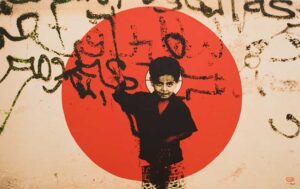
Target, 1992. Silkscreen on canvas, 100 x 150
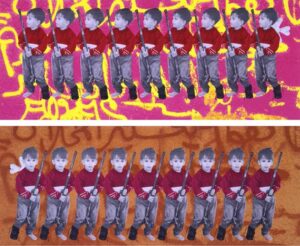
Children of War, Children of Peace, 1996. cm. Lithograph, 80 x 92 cm.
Each time the violence flares again in Gaza, and children are again dug from the bombed- out ruins of buildings, I return to my cache of images from the past, to conjure works in the present that I hope will help break this vicious cycle in the future. As an artist I cannot not be involved, nor protect myself from the pain of being involved. Making these works doesn’t ease that pain, and nothing would please me more than to end my Walls of Gaza series now.
Laila Shawa, London, 2020
